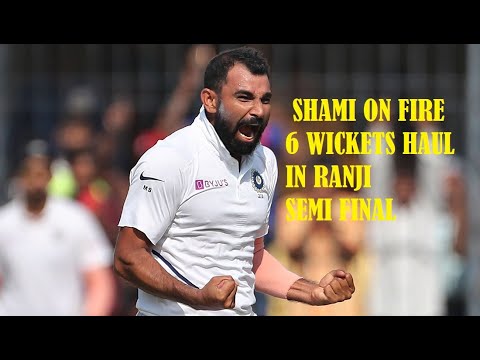In the high-stakes arena of international cricket, where fortunes swing faster than a well-bowled inswinger, the conversation around player selection often ignites as much passion as the game itself. Recently, veteran Indian pacer Mohammed Shami stepped into this fiery debate, delivering a candid statement that has sent ripples through the cricketing fraternity. His omission from India`s white-ball tour of Australia, despite a stellar performance in the recent World Cup, has brought to the fore perennial questions about fitness assessments, selector-player communication, and the perceived value of domestic cricket.
The Fitness Conundrum: A Question of Proof
Shami, a man who has consistently proven his mettle on the biggest stages, found himself sidelined, with whispers of fitness concerns accompanying the selection announcement. However, the 35-year-old was quick to counter, pointing to his active participation in the Ranji Trophy, India`s premier first-class competition, for Bengal. “If there is a fitness issue, I shouldn`t be here playing for Bengal,” he asserted, adding, “If I can play four-dayers, I can also play 50-overs cricket.” This isn`t merely a personal grievance; it`s a direct challenge to the often-opaque process of fitness evaluation. Is playing a rigorous four-day match, demanding sustained effort and recovery, not a sufficient testament to a player`s physical readiness for a shorter format?
The logic seems straightforward: the ability to endure the prolonged demands of Test-match-style cricket should naturally qualify one for the less physically taxing (albeit high-intensity) demands of a 50-over game. Shami`s argument isn`t just about his individual case; it`s about the very definition of `match fitness` and how it`s assessed by the powers that be.
The Communication Chasm: Who Updates Whom?
Perhaps even more striking than the fitness debate is Shami`s blunt assessment of the communication breakdown between players and the selection panel. When chairman of selectors Ajit Agarkar cited a lack of update on Shami`s fitness, the pacer retorted with characteristic forthrightness: “About giving an update, it`s not my responsibility… My job is to go to the NCA (National Cricket Academy), prepare and play matches.”
“Woh unki baat hai unko kaun update deta hai, kisne nahin diya.” (That`s their matter who gives them updates or not.)
This statement, delivered with a hint of exasperated irony, underscores a critical flaw in the system. In an era where information travels at the speed of light, and professional sports organizations pride themselves on sophisticated support structures, a disconnect regarding a star player`s fitness status seems almost archaic. It raises questions about the efficacy of established protocols, the roles of the NCA, and the overall transparency that players can expect from their national board. Is it truly a player`s burden to chase down selectors with personal fitness reports, or should a robust system ensure that relevant information flows seamlessly?
The Enduring Value of Domestic Cricket
Amidst the debate, Shami also provided a timely reminder of the importance of domestic cricket. In an age where glamorous T20 leagues often overshadow traditional formats, the Ranji Trophy often struggles for relevance among those aspiring for international glory. Shami, however, sees it differently: “In the old days, Ranji Trophy was a big level for anyone. But today, we have a platform, and you think it`s an `insult` to go back to play first-class cricket like Ranji Trophy. I don`t think so. You should play four-day cricket.”
His willingness to don the Bengal colours, even while eyeing a national recall, speaks volumes. It`s a testament to his professionalism and a subtle critique of a system that might sometimes view domestic assignments as a step down. For Shami, it’s a vital proving ground, a place to hone skills, regain rhythm, and, crucially, demonstrate match readiness. If performance in Ranji Trophy becomes a condition for national selection, he says, “then there is nothing wrong in that. No doubt, you should perform.”
A Veteran`s Resilience and A System`s Test
Mohammed Shami`s journey has been one of resilience. He battled recurring ankle and knee injuries, underwent surgery after a career-defining 2023 World Cup where he emerged as India`s top wicket-taker, and has consistently fought his way back. His candid remarks now serve as a poignant case study, highlighting the complex dance between a veteran player`s form, fitness, the aspirations of a national team, and the decisions of a selection committee. As India looks towards future challenges, the episode with Shami underscores the need for clearer communication channels, consistent fitness assessment criteria, and perhaps, a deeper appreciation for the contributions and experiences of proven match-winners.
The ball, it seems, is now in the selectors` court. Will they address the concerns raised by one of their premier pacers, or will the “bouncer from Bengal” simply be allowed to pass by without acknowledgment? Only time, and future team selections, will tell.








